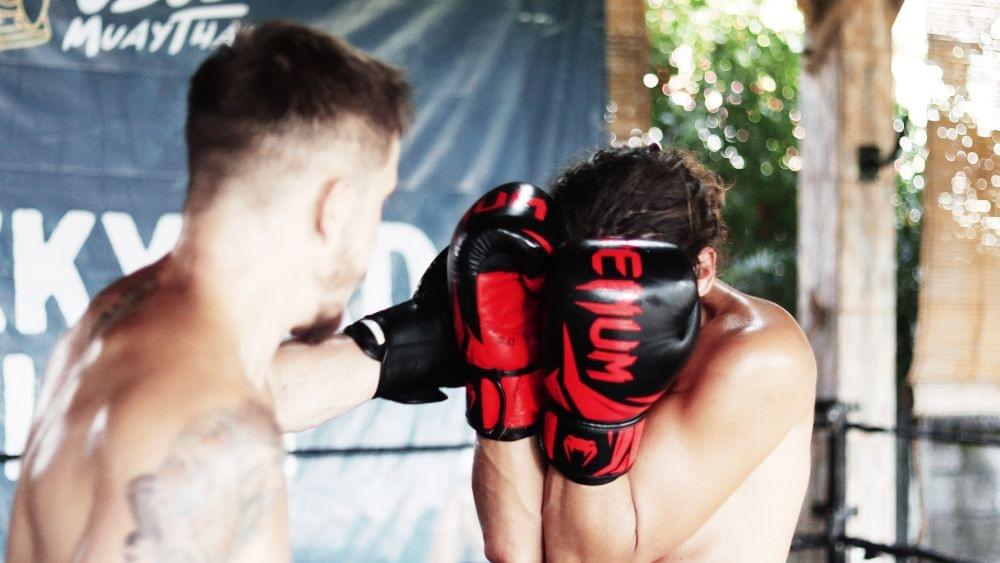When it comes to stand-up combat, Muay Thai vs Dutch Kickboxing is one of the most discussed comparisons among striking martial arts. Both styles are respected for their effectiveness in competition, self-defense, and conditioning. They share similarities in appearance, both involve punches, kicks, and clinch-range techniques, but the philosophy, rhythm, and strategy behind each system differ significantly.
This breakdown explores how each style trains, fights, and adapts, so you can better understand what sets them apart and how each might shape your journey in martial arts.
Core Techniques and Training Styles

Muay Thai utilizes punches, kicks, elbows, and knees, making it one of the most complete striking systems. Fighters are trained to use every part of the body to strike, defend, and control the opponent, especially in the clinch. Training often focuses on repetition, balance, timing, and mental toughness, with heavy emphasis on pads, bags, and live sparring.

Dutch Kickboxing, on the other hand, is a hybrid style influenced by traditional Muay Thai, Western boxing, and Kyokushin karate. While elbows and clinch work are limited or entirely absent, the style makes up for it with aggressive combinations, high-volume striking, and tight boxing technique. Training typically involves heavy bag work, pad drills, high-tempo sparring, and a relentless focus on conditioning.
In short, Muay Thai emphasizes power, timing, and simplicity; Dutch Kickboxing prioritizes combination flow, aggression, and pressure.
Competition and Sport

Muay Thai competitions often take place over five rounds and include the full range of techniques, kicks, punches, knees, elbows, and clinch work. Fighters are scored not only on effectiveness but also on balance, ring control, and traditional rhythm. The pace usually builds up over the rounds, starting slow and becoming more aggressive as the fight progresses.
Dutch Kickboxing matches, typically found in promotions like Glory Kickboxing or Enfusion, follow a fast-paced, three-round format. The scoring system rewards aggression, volume, and clean, high-impact combinations. Since clinching is usually limited to a few seconds, fighters are encouraged to strike quickly and constantly, making Dutch-style bouts intense from start to finish.

If you enjoy a traditional, strategic buildup, Muay Thai’s scoring and pacing may appeal to you. If high-pressure exchanges and boxing-heavy combinations excite you, Dutch Kickboxing’s format delivers that thrill.
Self-Defense Application
In terms of self-defense, Muay Thai provides practical tools for close-quarters combat. Elbows, knees, and clinch control are particularly useful in real-life scenarios where space is limited. Its emphasis on simplicity and toughness means fewer techniques to remember under stress, but with devastating results when applied correctly.

Dutch Kickboxing, while slightly more sport-focused, still offers powerful striking fundamentals, especially in boxing, footwork, and offensive pressure. However, the lack of clinch work and elbows limits its utility in tight, unpredictable environments. That said, its speed and movement can be useful in managing distance and overwhelming a threat with rapid combinations.
Both are effective, but Muay Thai may offer more versatility in self-defense situations due to its closer-range tools and clinch dominance.
Which is harder to learn: Muay Thai or Dutch Kickboxing?
The difficulty depends on the individual and how they respond to different types of training. Muay Thai can be challenging due to its emphasis on balance, timing, and mastering all eight limbs, including knees, elbows, and clinch control.
The slower tempo can be deceptive, as it demands precise technique and mental discipline. Dutch Kickboxing, on the other hand, requires quick reactions, high-volume striking, and seamless combinations, which can be overwhelming for those not used to fast-paced training.
For beginners, Muay Thai often feels more structured and easier to follow in the early stages. Dutch Kickboxing may feel more intense, but it becomes more fluid with time.
Both styles are technically demanding and take years to master, but the challenge you experience will depend on your natural rhythm, learning style, and training goals.
Choosing the Right Martial Art

The decision between Muay Thai vs Dutch Kickboxing ultimately depends on your goals, preferences, and learning style.
- If you want a traditional martial art that builds discipline, offers complete striking tools, and includes clinch and elbow work, Muay Thai is a strong choice.
- If you prefer a modern, high-tempo style that blends strong boxing with kick-heavy combinations and athletic movement, Dutch Kickboxing may suit you better.
Consider your training environment too, some gyms may blend elements of both. Trying out classes in each style is the best way to get a feel for the techniques, energy, and community that match your mindset.
Curious to experience the difference for yourself? Join a Muay Thai class at Ubud Muay Thai and train in a setting that combines traditional technique, smart conditioning, and a supportive fight community. It’s the perfect place to sharpen your skills and find your rhythm.

